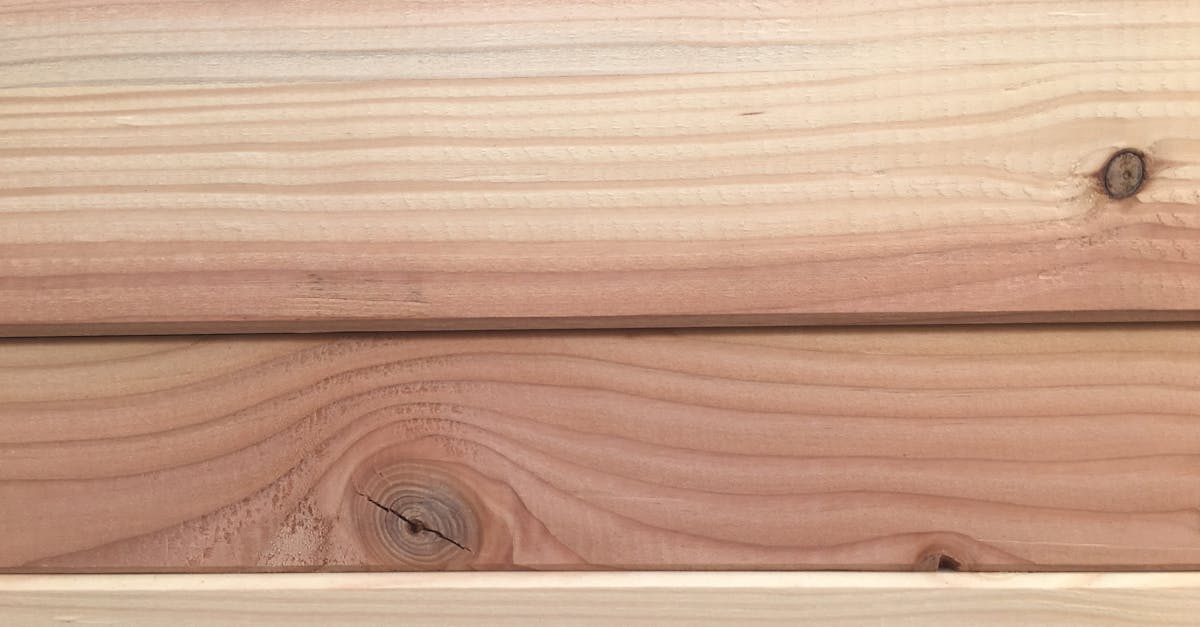
Dealing with Difficult Areas
When it comes to floor sanding, some areas can prove to be more challenging than others. Corners and edges often require special attention since they are typically difficult to reach with standard equipment. A hand-held sander or sanding block can effectively address these spots. This approach allows for better control, ensuring that the finish remains consistent with the rest of the floor.
Additionally, dealing with features such as staircases, thresholds, or intricate designs may also require unique techniques. For stair treads, using a detail sander can help achieve a smooth finish without risking damage to surrounding areas. It is important to take your time with these difficult spots to ensure that the overall project maintains a high-quality appearance.
Techniques for Sanding Edges and Corners
Sanding edges and corners requires a precise approach to ensure a uniform finish throughout the entire floor. When using a floor sander, this equipment may not easily reach tight spots near walls or intricate moldings. A manual sanding tool or a detail sander is more effective in these areas. Maintaining an even pressure while working in smaller sections will prevent oversanding and help achieve a consistent texture.
It is important to choose the correct grit sandpaper when sanding edges and corners to avoid damaging the wood. Start with a coarser grit to remove any imperfections and transition to a finer grit for a smoother finish. Checking your work frequently will help ensure that the edges blend seamlessly with the rest of the floor sanding. Utilizing both power and hand tools will facilitate a professional-quality sanding job, even in these challenging areas.
Safety Precautions During Sanding
When embarking on a floor sanding project, prioritizing safety is essential to protect both yourself and the surrounding environment. Dust generated during the sanding process can be harmful if inhaled, necessitating the use of a respirator mask designed for fine particles. Additionally, ensuring your workspace is well-ventilated will help minimize dust accumulation and facilitate easier cleanup. It’s also wise to remove any furniture or items that might obstruct your work area, reducing the risk of accidents.
Furthermore, wearing appropriate clothing is important to prevent injuries. Long sleeves and pants will shield your skin from both dust and sharp edges of the floor. Heavy-duty work gloves are recommended to protect your hands, while goggles can guard your eyes against flying debris. Keep in mind that floor sanding equipment can be heavy and unwieldy. Maintaining proper footing and grip on your sanding machine is crucial to avoid slips and falls during the process.
Protective Gear and Safety Measures
When engaging in floor sanding, personal safety should be a top priority. Using appropriate protective gear is essential to guard against the dust and debris generated during the sanding process. A quality dust mask or respirator will help filter out harmful particles from the air. Additionally, safety goggles provide necessary eye protection from flying dust and wood particles. Hearing protection is also advisable, as sanders can produce a significant amount of noise.
In addition to personal protective equipment, ensuring the workspace is well-ventilated is crucial. Open windows and doors to allow fresh air to circulate and reduce dust accumulation. Taking the time to cover vents and openings can prevent dust from spreading to other areas of the home. Adhering to these safety measures while floor sanding will create a safer environment and enhance the overall quality of the project.
Finishing Your Sanded Floors
After completing the floor sanding process, selecting the appropriate finish is essential for ensuring the longevity and appearance of your floors. Different types of finishes, such as oil-based polyurethane, water-based polyurethane, and natural oil finishes, each offer distinct advantages. Oil-based finishes tend to be more durable and provide a rich color enhancement. Water-based options dry more quickly and emit fewer odors, making them ideal for indoor applications. Carefully considering the traffic levels in your space can help determine the best finish to choose.
Applying the finish requires precision and care to get an even coat. It is advisable to use a quality applicator such as a roller or brush suited to the finish type chosen. Following the manufacturer's instructions regarding application techniques, drying times, and the number of coats is crucial for achieving the best result. Taking the time to properly finish your sanded floors not only enhances their aesthetic appeal but also protects them from wear, ensuring they maintain their beauty for years to come.
Selecting the Right Finish to Apply
Choosing the right finish after floor sanding is crucial for both appearance and durability. Options range from oil-based to water-based finishes, each offering unique benefits. Oil-based finishes generally provide a warm amber hue and are known for their durability, making them suitable for high-traffic areas. Water-based finishes offer quicker drying times and a clearer appearance, allowing the wood grain to shine through without altering its color.
When selecting a finish, consider the type of wood and the overall look you wish to achieve. Some finishes require additional coats or specific application techniques for optimal results. Additionally, take into account the level of maintenance you are willing to undertake, as some finishes may need reapplication sooner than others. This choice impacts not only the aesthetic of your floors but also their longevity and performance over time.
FAQS
Can I sand my own floors without professional help?
Yes, you can sand your own floors if you have the right tools and knowledge. However, it requires careful preparation and attention to detail to achieve professional-quality results.
What tools do I need to sand my floors?
Essential tools for sanding floors include a drum sander, edge sander for corners, sanding pads, dust mask, and protective gear. You may also need a vacuum or broom to clean up dust.
How do I deal with difficult areas like edges and corners?
Use an edge sander to carefully sand the edges and corners. Techniques such as using a hand scraper or sanding by hand may also be effective for precise areas.
What safety precautions should I take while sanding?
Always wear protective gear such as a dust mask, goggles, and ear protection. Ensure proper ventilation in the area and follow safety guidelines for using power tools.
How do I choose the right finish for my sanded floors?
Consider the type of wood, desired appearance, and durability requirements when selecting a finish. Options include oil-based, water-based, and polyurethane finishes, each offering different benefits.

